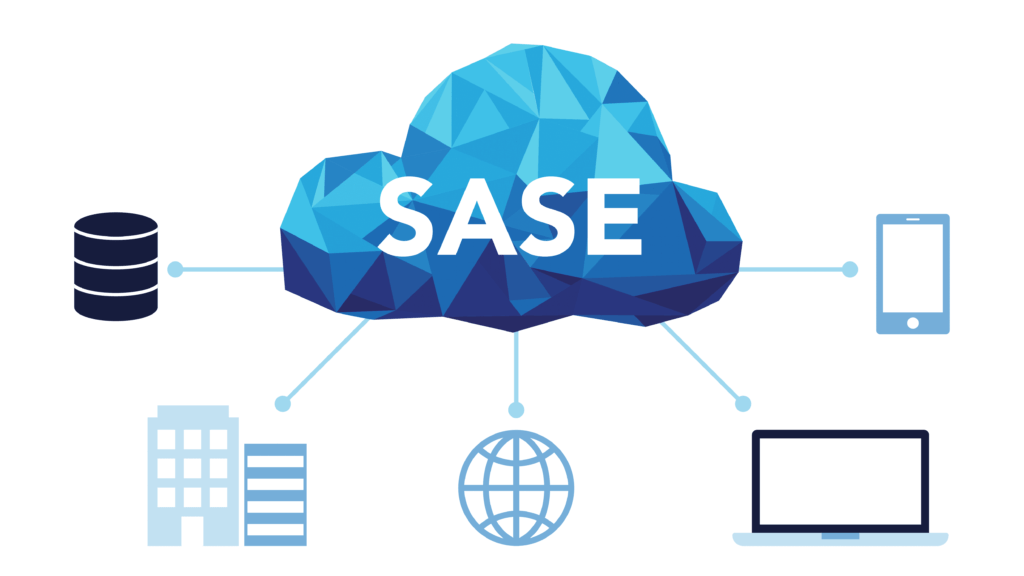Table of Contents
The Growing Intersection of Collaboration Tools and Network Security
As the digital transformation continues to reshape modern business, integrating collaboration tools with robust network security has grown increasingly critical. Enterprise teams across the globe now depend on digital platforms for a broad range of activities, from strategizing on project management platforms to exchanging ideas via instant messaging. This growing reliance on technology begs the question: how does one maintain the highest productivity levels without compromising network security? As a result, organizations are focusing on innovative security solutions that enable seamless collaboration while providing robust protection against cyber threats.
What Is SASE?
In the emerging era of the hyper-connected workspace, what is SASE? becomes a pertinent query for businesses pursuing resilience. SASE stands for Secure Access Service Edge, a revolutionary network architecture amalgamating comprehensive WAN capabilities with advanced network security functions into a single, integrated cloud service. The emergence of SASE signifies a substantial shift in handling network security, offering streamlined scalability and optimized performance tailored to the demands of modern enterprises that utilize cloud-based services and dynamic, distributed environments.
Why Collaboration Tools Need SASE
Collaboration tools have become the lifeline of businesses, enabling teams to work together in real-time, irrespective of distance. However, the inherent openness necessary for these tools to be practical inadvertently exposes an organization to myriad security challenges. SASE architecture addresses these challenges by enforcing consistent security policies across all assets and ensuring secure access points for various communication channels. By situating security at the network edge, SASE allows for secure scalability of collaborative environments, delivering peace of mind and enhanced cooperation capabilities.
The Role of SASE in Facilitating Secure Remote Work
Remote work, once a perk, has rapidly evolved into a norm, pushing the limits of traditional network architectures. Enterprises now require a security paradigm that embraces this distributed workforce model and fortifies it against escalating cyber threats. It is where SASE shines. It allows employees secure, policy-based access to network resources, eliminating the geographical barriers that once defined a workspace. Designed for the dynamic access needs of a modern workforce, SASE ensures that remote connections are as secure as those within the traditional network perimeter, if not more so.
How SASE Enhances Data Protection in Cloud Environments
Cloud computing’s ubiquity in business operations presents a new spectrum of data vulnerability that demands innovative protection strategies. SASE offers a framework to secure data in transit and at rest, giving cloud environments the robust shield they need against intrusion and data exposure. This contemporary model combines network security services like secure web gateways, firewalls, and sandboxing with advanced data encryption, spurred by the necessity to protect sensitive information in an era where the cloud’s expansiveness has eroded traditional boundaries of information flow.
Best Practices for Implementing SASE with Collaboration Platforms
A well-executed implementation of SASE within an organization’s collaborative tools is paramount to its successful adoption. IT leaders must begin by assessing their teams’ collaboration and communication needs and identifying potential security gaps that SASE can address. Strategic planning should also include:
- A definitive rollout process.
- Prioritizing extensive employee education on the benefits and operation of SASE.
- Ensuring ongoing support and troubleshooting post-adoption.
Ultimately, the goal is to construct a secure ecosystem that promotes productivity, fosters collaboration and maintains rigorous security standards.
Improved Performance
SASE optimizes network performance and application delivery by leveraging SD-WAN capabilities to route traffic based on dynamic application requirements and network conditions. It ensures low-latency connectivity and high-quality user experiences, even for bandwidth-intensive collaboration applications such as video conferencing and file sharing.
Simplified Management
By consolidating networking and security functions into a single cloud-based platform, SASE simplifies IT management and reduces administrators’ complexity. Organizations can centrally manage security policies, monitor network performance, and enforce access controls through a unified dashboard, streamlining operations and reducing overhead costs.
Scalability and Flexibility
SASE offers scalable and flexible deployment options, allowing organizations to adapt to changing business requirements and scale their infrastructure as needed. Whether deployed in a hybrid, multi-cloud, or fully remote environment, SASE provides the flexibility to accommodate evolving workloads and support business growth.
Regulatory Compliance
With built-in security features such as encryption, data masking, and identity authentication, SASE helps organizations maintain compliance with industry regulations and data protection standards. By encrypting data in transit and enforcing access controls based on user identity and device posture, SASE ensures that sensitive information remains secure and confidential.
Future Trends: SASE and the Evolving Digital Workplace
Technology and the workplace are inextricably linked, and future trends point to an even greater fusion between SASE and the digital workspace. With ongoing innovations in artificial intelligence, machine learning, and cybersecurity, expect SASE to become more intuitive, predicting threat patterns and automating responses. The forward momentum of digital transformation will demand more fluid, dynamic architectures akin to SASE, which can quickly adapt to the ever-changing digital ecosystem and the evolving needs of the remote workforce.
Delving further into these intricate themes, industry stalwart Gartner expounds on the necessity for a forward-looking network security model, such as SASE, to adapt to the shifting cloud frontiers.







